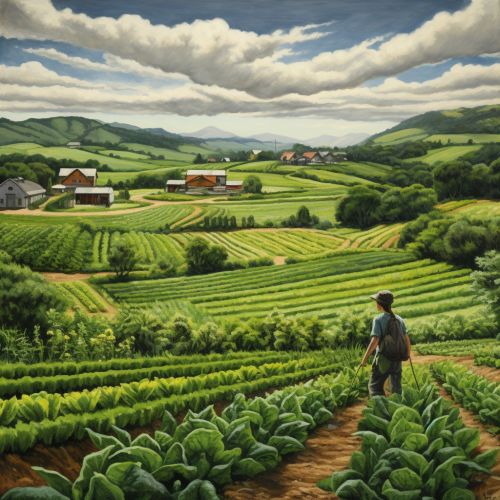Green Revolution
Overview
The Green Revolution refers to a series of research, development, and technology transfer initiatives, occurring between the 1940s and the late 1970s. It increased agricultural production worldwide, particularly in the developing world, by increasing the amount and quality of agricultural machinery and fertilizers available to farmers.


History
The term "Green Revolution" was first used in 1968 by former United States Agency for International Development (USAID) director William Gaud, who noted the spread of the new technologies and said, "These and other developments in the field of agriculture contain the makings of a new revolution. It is not a violent Red Revolution like that of the Soviets, nor is it a White Revolution like that of the Shah of Iran. I call it the Green Revolution."
The initiatives resulted in the adoption of new technologies, including high-yielding varieties (HYVs) of cereals, especially dwarf wheats and rices, in association with chemical fertilizers and agro-chemicals, and with controlled water-supply (usually involving irrigation) and new methods of cultivation, including mechanization. All of these together were seen as a 'package of practices' to supersede 'traditional' technology and to be adopted as a whole.
Impact on Food Production
The Green Revolution resulted in a record grain output of 131 million tons in 1978-79. This was a spectacular achievement, considering that the nation had been facing severe food shortages in the years following its independence in 1947. The increase in food grain production was not uniform over all crops or all regions. The most significant increases were observed in the production of wheat, maize, and rice. Other crops such as barley, mustard, and potato also showed some increase in production.
Criticisms and Controversies
While the Green Revolution has been credited with saving hundreds of millions of lives from starvation, it has also been criticized for its negative impacts on the environment and small farmers. Critics argue that the high-yield varieties of the Green Revolution require high amounts of chemical fertilizers and pesticides, leading to soil degradation and other environmental harm.
Furthermore, the Green Revolution has been criticized for promoting a one-size-fits-all approach to agriculture, which has led to the loss of biodiversity in food crops. Critics also argue that the Green Revolution has led to increased income inequality in rural areas, as wealthier farmers are better able to afford the new technologies.
Future Prospects
The future of the Green Revolution is a topic of intense debate. Some argue that with the world's population expected to reach 9 billion by 2050, we need another Green Revolution to increase food production. Others argue that a more sustainable approach to agriculture is needed, one that takes into account environmental and social impacts.
